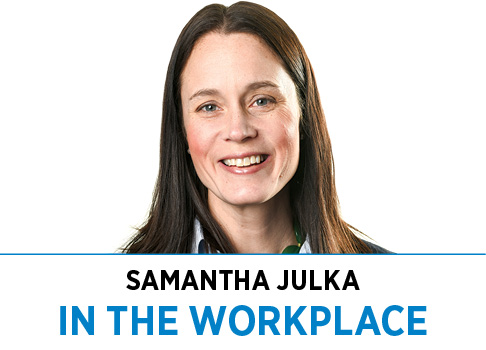Subscriber Benefit
As a subscriber you can listen to articles at work, in the car, or while you work out. Subscribe Now I mean, don’t get me wrong, I don’t love being called out on stuff like how to load the dishwasher properly so the dishes will “actually get cleaned” or why it’s so important to check all my mirrors when backing out of the garage (side note, as it turns out, that’s actually fairly important).
I mean, don’t get me wrong, I don’t love being called out on stuff like how to load the dishwasher properly so the dishes will “actually get cleaned” or why it’s so important to check all my mirrors when backing out of the garage (side note, as it turns out, that’s actually fairly important).
What I do love being wrong about are my assumptions about what we are going to find when we collect data from people. For us researchers, an interesting data set is just as satisfying as a big bite of ice cream on a hot day.
Over the last four weeks, our group set out on something I might call a passion project. We wanted to understand how the COVID-19 pandemic was affecting emotions, attitudes and perceptions around returning to the physical workplace. So far, we have collected data from nearly 1,000 people across 28 states and 21 industries. For non-billable work, that’s a pretty decent data set gathered simply to see what we could find out. And what we discovered went against our assumptions at every turn.
For example, when we mapped how ready people felt to return to the office, I foolishly thought we would see a downward-trending graph based on age. I thought the youngest folks in any given office would be those most ready to return to work, given the statistics I read in the paper that people in their 60s and beyond were most heavily affected by COVID-19.
Talk about flattening the curve: When we put all our data together and compared how ready different generations feel, there was no curve—just one flat line. On a scale from zero to 10, with zero meaning “not ready,” 5 meaning “unsure” and 10 meaning “extremely ready,” what was our average across all age groups? A 6. So, in general, people are slightly more ready than not, but not really ready, with no significant difference between generations.
What was interesting and a little puzzling was how different readiness looked when we focused on one organization at a time. When we did this, we found drastic differences between age and readiness to return to the office. Some organizations’ graphs looked like the letter V with the youngest and oldest almost equally ready to return to work, while those in the middle ages were less ready. Other graphs looked like the exact inverse, with the youngest and oldest least ready, while other graphs had lines that trended up or lines that trended down.
I think when we stood back and looked at all that data, we thought to ourselves, “Wow, culture within organizations really does matter and it really is different from one group to the next!”
The last insight I will leave you with is what we found when we asked people the open-ended question, “If your workplace were reopened today, what would limit your ability to return?”
Dr. Fauci, if you are reading this, maybe just call it good here. The top answer given to us was: nothing. Many people described feeling no barriers associated with returning to their physical workplace. The second-most-common answer was a hesitation to return due to uncertainty over safety followed by a lack of child care.
As we continue down this fact-finding journey to investigate how people will get back to their workplaces and what those workplaces will look like in the future, I know our team can’t wait to learn what else we are wrong about. Here’s to finding that next big bite of ice cream … I mean insight!•
__________
Julka is founder of Indianapolis-based DORIS Research, which uses design thinking to organize workspaces.
Please enable JavaScript to view this content.
